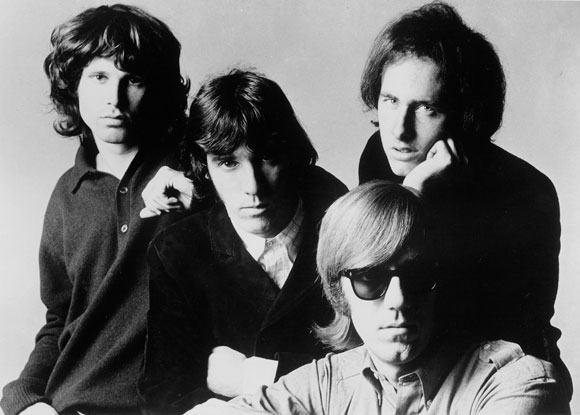When You’re Strange

Unquestionably, The Doors have influenced countless rock bands. As much as the director, Tom DiCillo, attempts to convince us of Jim Morrison’s calculated genius in a film comprised entirely of archival footage, it becomes evident that the iconic lead vocalist is anything but Machiavellian—let alone organized in his thoughts. Instead, whether intended or not, this documentary makes a better argument for drummer John Densmore, guitarist Robby Krieger and keyboardist Ray Manzarek—all talented, schooled musicians who knew precisely where to let the notes fall, cushioning the often delirious Morrison. Producer Paul Rothchild and sound engineer Bruce Botnick also played key roles in the band’s success. Morrison’s experimental rants, not unlike those of Godard and other innovators of the period, are accidental genius.
Our narrator, Johnny Depp, takes us through the history of The Doors and their brief, six-year burn—from their formation in 1965 to Jim Morrison’s death in 1971. Manzarek and Densmore met Morrison at Venice Beach while he was writing lyrics, and pulled the band’s name from the Aldous Huxley novel, The Doors of Perception (Huxley’s title itself taken from a William Blake poem). By 1966, the band was playing The London Fog (note: Mr. Depp’s bar, The Viper Room, once doubled for the Fog in Oliver Stone’s 1991 biopic, The Doors) and the famous Whisky A Go-Go. The first half of the film is spent rehashing mostly common knowledge of the band. The timeline voice-overs drag on for an hour before the film wades into deeper, muddier waters.
When You’re Strange wobbles in the transition from straightforward biography to op-ed with teeth. At times, the editor doesn’t seem to know what to do with the uncovered footage, or there isn’t enough to string it into a visual narrative. However, the director takes us into Morrison’s escalating dependency, beginning around 1968 when The Who was the band’s opening act. While Manzarek and Krieger have acknowledged LSD use, it was Morrison’s alcohol addiction that sent the band reeling. Somehow, they managed to squeeze out The Soft Parade, in 1969, just before their lives began to spin apart. The album achieved their greatest critical acclaim, and was the last to employ Rothchild’s ear. Not long thereafter, Morrison saw The Living Theater, and this altered his outlook significantly. Some argue that he became an anarchist. Others claim he was echoing the surrealist poets.
Fans maintain that his esoteric stage antics and flouting of authority which followed was, in fact, enlightenment. But critics generally agree that they passed their creative peak. The director attempts to link it all together through pristine sequences of Morrison cruising the desert in his black Shelby Mustang (from Doors’ photographer Paul Ferrara’s 1969 film, HWY: An American Pastoral). However, we only digest bits and pieces of this Jim Morrison—miles away from the media and fan attention that fed into his ego. As a recurring motif, it never connects with his public persona, but it shows us at least that the man wasn’t the boisterous fool Oliver Stone made him out to be. He can make a kind, gentle gesture to a coyote dying on the highway, or to a fan who’s been bludgeoned with a chair. When he isn’t on stage, he treats others as equals.
It’s here where the film succeeds in completing its primary argument: Jim Morrison, as repetitive and monosyllabic his banal lyrics may have been, had the capacity for treating people with respect, but failed to respect himself by spiraling into alcohol and eventually cocaine abuse.
 When You’re Strange • Dolby® Digital surround sound in select theatres • Aspect Ratio: 1.85:1 • Running Time: 90 minutes • MPAA Rating: R for some sexual content including references, nudity, drug material and language. • Distributed by Rhino Entertainment
When You’re Strange • Dolby® Digital surround sound in select theatres • Aspect Ratio: 1.85:1 • Running Time: 90 minutes • MPAA Rating: R for some sexual content including references, nudity, drug material and language. • Distributed by Rhino Entertainment